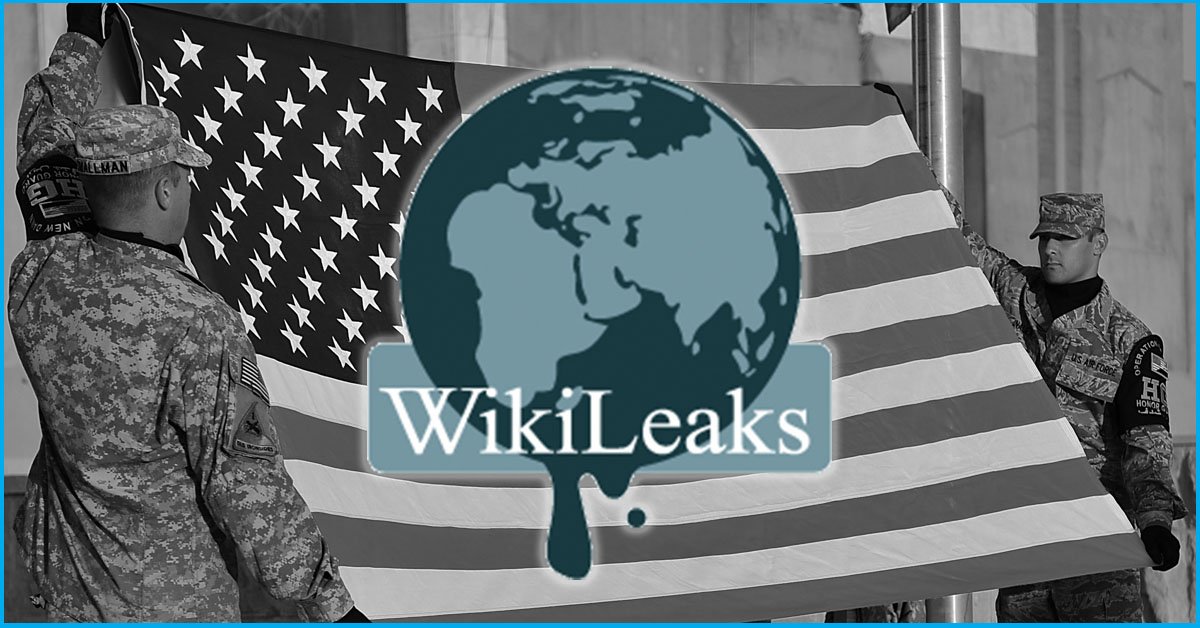Today, 8 Years Ago: WikiLeaks Accesses Thousands Of Classified Documents About US Military Misconduct In Iraq & Afghanistan
18 Feb 2018 9:06 AM GMT
Editor : Bharat Nayak
As the founding editor, Bharat had been heading the newsroom during the formation years of the organization and worked towards editorial policies, conceptualizing and designing campaign strategies and collaborations. He believes that through the use of digital media, one could engage the millennial's in rational conversations about pertinent social issues, provoking them to think and bring a behavioral change accordingly.
February 18 marks the anniversary of the day in 2010 when Wikileaks got access to the first of hundreds of thousands of classified documents disclosed by the American soldier now known as Chelsea Manning. These documents began a series of leaks that caused global outrage, made Wikileaks a household name, sparked a highly controversial prosecution of Manning, and ignited serious debates on surveillance, whistleblowing and wartime conduct.
Below is a timeline of the events that led to February 18, 2010, and the consequences of the leaks that followed.
Timeline
October 2007: Bradley Manning joins the US Army (Manning presently identifies as a trans woman; more details here). He is 19.
October 2009: Manning is deployed to Iraq. There, he finds the Baghdad airstrike video. The video shows two American helicopters firing on a group of ten men in the Amin District of Baghdad in July 2007. The group includes Reuters journalists and Iraqi civilians.
November 2009: Wikileaks releases 570,000 intercepts of pager messages sent on 9/11 (the 11 September 2001 attacks). The leaks are heavily publicised and catch Manning’s attention.
January 2010: Manning downloads hundreds of thousands of files which contain sensitive military information relating to US involvement in Afghanistan and Iraq. (Following the 9/11 attacks, the US had invaded Afghanistan in 2001 and Iraq in 2003.) The files Manning secretly downloaded contain information regarding US conduct during these wars. The files are broadly classified as the Iraq and Afghanistan war logs. They are smuggled through military security on a CD-RW named “Lady Gaga”. Manning takes two weeks’ leave and returns to the United States via Germany.
During this time, Manning wrote a message intended for The Washington Post. It read:
“Items of the historical significance of two wars Iraq and Afghanistan Significant Activity, Sigacts, between 0001 January 2004 and 2359 31 December 2009 extracts from CSV documents from Department of Defense and CDNE database. These items have already been sanitised of any source identifying information. You might need to sit on this information for 90 to 180 days to best send and distribute such a large amount of data to a large audience and protect the source. This is one of the most significant documents of our time removing the fog of war and revealing the true nature of 21st century asymmetric warfare. Have a good day.”
February 2010: Failing to elicit an enthusiastic response from The Washington Post and The New York Times, Manning passes the Iraq and Afghanistan war logs to Wikileaks.
March – April 2010: Back in Iraq, Manning downloads 250,000 diplomatic cables; these are also sent to Wikileaks.
April 2010: WikiLeaks posts the Baghdad airstrike video. The video, named “Collateral Murder”, goes viral, Wikileaks becomes a global topic of discussion, Manning’s leaks begin to make headlines around the world.
May 2010: Manning is arrested in Kuwait, detained, and subsequently charged with leaking classified information. It is gradually revealed that Manning was detained in inhuman conditions, with allegations of torture, abuse, and long periods of solitary confinement finding their way into the mainstream media. Manning’s detainment raises concerns in the US and around the world.
July – October 2010: Wikileaks publishes the Afghanistan and Iraq war logs. Soon, the diplomatic cables procured by Manning are also leaked by Wikileaks. The leaks are initially covered by Britain’s The Guardian, America’s The New York Times and Germany’s Der Spiegel before making their way into international, national, and local news outlets around the world. The leaks cause a global uproar unlike anything before; America’s foreign policy and military conduct are questioned.
April 2011: The Guantánamo Bay files are released. These are 779 secret documents relating to detainees at the Guantánamo Bay detention camp established in 2002 after its invasion of Afghanistan in 2001. The files reveal American treatment of the detainees, and details about the detainees themselves.
December 2011: Manning’s court-martial begins. Manning is ultimately charged with 22 specified offences, including communicating national defence information to an unauthorised source, aiding the enemy, violating the Espionage Act, stealing US Government property, and charges related to the failure to obey lawful general orders. Manning pleads guilty to ten of the offences.
February 2013: Manning pleads guilty to leaking military information. Manning is subsequently given a three-decade prison sentence, slated for release only on 2045.
January 2017: US President Barack Obama commutes all but the last four months of Manning’s remaining sentence. The commutation comes only three days before Obama’s term ends. She was duly freed on 17 May 2017.
Also Read: Chelsea Manning: Who Is She, What Did She Do & Is She A Hero Or A Traitor?
 All section
All section














